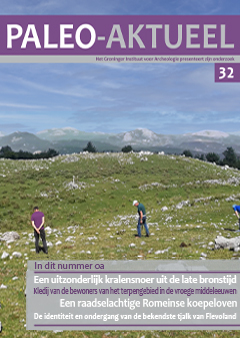Koper, lood en tin - een uitzonderlijk kralensnoer uit de late bronstijd uit Borger
DOI:
https://doi.org/10.21827/PA.32.43-50Samenvatting
Copper, lead and tin – an extraordinary Late Bronze Age string of beads from Borger. Around 2017, an amateur metal detectorist searching at Borger in the immediate vicinity of the base of a Middle Bronze Age barrow, which had been excavated in 1987, came across 245 metal beads: four large beads and 241 small ones. One of the four large beads is made of lead, two are of a lead/tin alloy and one is of copper; the 241 biconical and cylindrical small beads are all made of copper. XRF analysis showed that the copper is of a type known as Fahlerz or Fahlore (which includes Singen and Ösenring types of copper). Fahlerz was used mostly in the Early Bronze Age, but also into the Late Bronze Age. The known intensification in the use of lead in Western Europe between 1000 and 500 BC makes it likely that the string of beads was buried – possibly as an isolated deposit – in the Late Bronze Age, no later than the 8th century BC. Further research is planned in the near future, viz. lead-isotope analysis and a small-scale field investigation.

